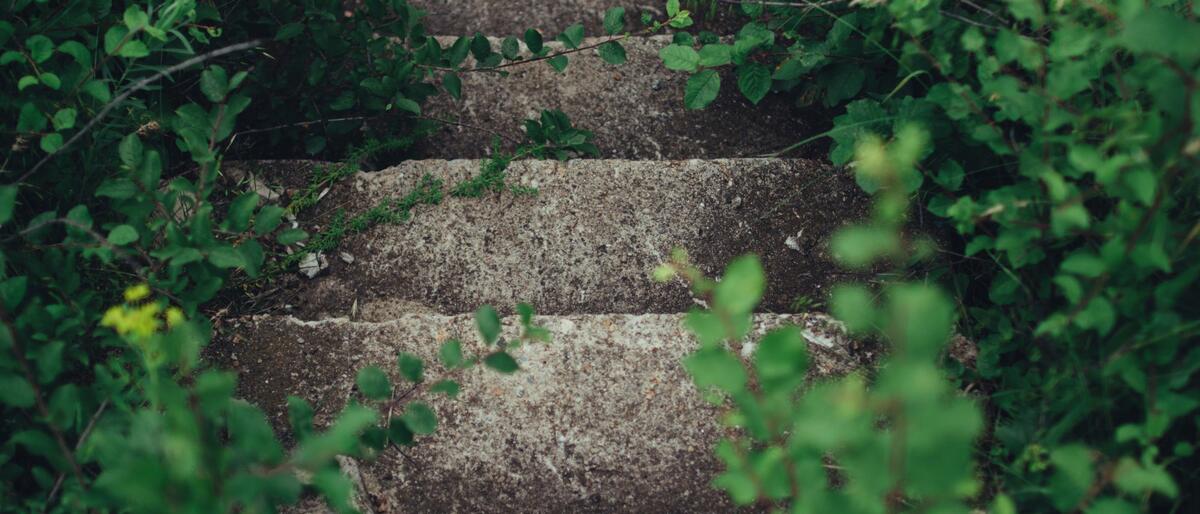8 Ways DIY Landscaping Can Go Wrong


Many people turn to landscape DIY to save some bucks or want to let out their creative side within the natural world. We are all for it; however, time and time again we see similar pitfalls of DIY'ing. We have complied a list of landscape maintenance considerations (different from landscape construction) in your DIY adventures. Our list was created to lower maintenance, future headaches and all the while keeping a clean lined look. So have fun and landscape on with these 8 ways DIY landscaping can go wrong.
Pot planting should be viewed as an accessory. Think of container planting similarly to how you would accessorize your clothing. You wouldn't wear bangles, a pearl necklace, a ruby brooch and diamond earrings. You would also want to avoid mismatched pots or a wide variety of sizes. Having too many pots with no design in mind creates a chaotic, cluttered look. You can see from the above photo (left) that a large variety of pots looks disorganized. While on the right the pot placement looks purposeful and used sparingly to create a clean look.To create pot harmony, use pots sparingly in groups of three which are similar in size, color and material. Also, using pots which are all the same material and color but slightly stair-stepped down in size, grouped together looks visually appealing. When choosing plants, think about redundancy in plant selection. This plant repetition will look like purpose and create visual restraint
We know the bright spread of colors at the plant nursery in tempting to replicate, but it can be as jarring as a slash of too-pink lipstick after you get them home. While, the cottage garden look is beautiful, the maintenance will be very time consuming. Think less is more.Choose a limited pallet of three colors and annual flower planting to accent. The photo above displays a balanced look with white roses as the accent color. This creates a clean, uncluttered look to a landscape.
Pruning technique is very important in the overall appearance and health of your plants. The wrong technique may even kill your plants. Cutting too deep will invite disease and may shock your plants. In this case no pruning is better than wrong pruning. In the above photo you can see how improper pruning technique can cause big problems, improper pruning is an expensive way to save money. When in doubt contact a specialist.
This is probably the most common issue we come into with homeowners. Often times, people buy plants because they are pretty, overlooking their final height and width growth requirements. Keeping a tree or shrub to a specific size is not good for your plant material and will eventually kill it. Additionally, this requires time consuming pruning and money lost in choosing incorrect plant sizes which are not as long lasting as the correctly sized plants. As you can see from the photo above, these shrubs are being kept a certain size. Over time, parts of the shrub will die out in sections similarly to this example. It is important to choose plants based on functionality first and beauty second.
Adding plants here and there is not recommended as your landscape often ends up looking like there is no design or forethought to your landscape. Also, often, there are problems associated with piecemeal planting rather than a holistic approach in mind. For instance, are there erosion problems, have you taken into account sewer lines and how tree roots may affect them, is there proper irrigation coverage to the new plants (would you it be strain to your system, or do you need to add additional spray heads) and overall how does it look aesthetically? These are only a few examples why adding a plant here and there without a conscientious plan will impact your landscape. The above photo illustrates how to create an outdoor oasis with a deceivingly natural look, this landscape was professionally designed and installed.
We know the rows of bulk bulbs at a home store are like a honing beacon. While they are gorgeous, planting too many bulbs limits the season of your landscape. Additionally, many bulbs are difficult to keep track of when they are not in season, so remembering where to plant a new tree will end up as memory game. Bulbs are also fairly difficult to dig up if you decide to plant something else in their place. In the photo above you can see how hard packed they grow together. Some bulbs are invasive such as grape hyacinth. Choose bulbs sparingly and plant only a few you truly love and ensure they are a non-invasive variety.
The use of non-native invasive species can cause a slew of difficulties not only for your landscape but the environment. Invasive species cause erosion which impairs stream water quality, increases turbidity and lowers the overall water quality. Additionally, invasive species affect fish and local wildlife. Invasive species in a residential landscape increase maintenance drastically. Left unattended they can choke out native plants, trees and shrubs. The photo above is a classic example of a commonly planted invasive species (English ivy) Check out this blog on 4 invasive species to never plant.
Not accounting for the "locals" could be a costly dinner you are paying for. Take into consideration the local pests while choosing your plant material. For instance deer-like eating arbor vitae's (a commonly planted tree), so choosing something else in the country is advisable. If you plant a vegetable garden think about rabbits, raccoons, and chipmunks. Digging down about 1' and installing chicken wire around the perimeter of your garden is often an effective method to protect your prized veggies.